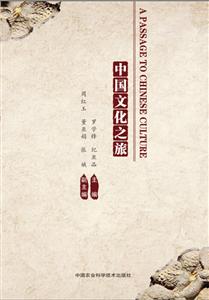-
>
东方守艺人:在时间之外(签名本)
-
>
大家小书:苏辛词说
-
>
(精)唐风拂槛:织物与时尚的审美游戏(花口本)
-
>
日本墨绘
-
>
(精)中国人的称呼(签名钤印本)
-
>
枫泾史话
-
>
风诗的情韵:李山讲《诗经》
中国文化之旅 版权信息
- ISBN:9787511635730
- 条形码:9787511635730 ; 978-7-5116-3573-0
- 装帧:一般胶版纸
- 册数:暂无
- 重量:暂无
- 所属分类:>
中国文化之旅 内容简介
全册共计分为地理、饮食、节假日、历史四个部分计19单元,每个单元结构如下:**部分主要是地理部分,讲述中国地理中的自然文化、风景以及美学意义,激发学生对祖国大好河山的自豪感以及如何讲好祖国山水的基本能力。第二部分主要是中国美食文化简介。通过具有中国特色的美食文化展示,凸显具有地方特色、民族特色的饮食文化,更好的讲述中国的悠久历史文化内涵。更好的向世人展示中国。民以食为天。第三部分主要是中国传统文化中的新年。中国传统文化中的新年对于整个世界的影响以及传达的民族文化内涵。进一步阐释5000年连续的文明背后的原因。第四部分是中国历史文化部分,讲好中国的故事是关键,中国的故事中的历史文化秉承整个民族文化,是民族文化的脊梁。从寻根问祖、丝绸之路、大唐盛世、两宋文化科技、大明王朝航海时代、以及大清帝国、新中国的成立,一步步走向辉煌的历史,客观、真实的诠释了整个民族的历史文化,在兴衰的进程中见证了辉煌的过去以及展望民族复兴的未来。在教材编写过程中,我们得到了许多同仁的大力支持以及建议,再次表示感谢。由于编写组成员知识水平有限以及对材料的理解度和感知力不同,因此存在的问题以及错误在所难免,希望读者予以指正。
中国文化之旅 目录
中国文化之旅 节选
Part IGeography Part I Geography Chapter OneHeart of the Dragon 1.1The last hidden world——China For centuries,travelers to China have told tales of magical landscapes and surprising creatures.Chinese civilization is the worlds oldest and today——its largest,with well over a 1.3 billion people.It is home to more than 50 distinct ethnic groups and a wide range of traditional lifestyles,often in close partnership with nature. We know that China faces immense social and environmental problems.But there is great beauty here,too. China is home to the worlds highest mountains,vast deserts ranging from searingsearing:炽热的 hot to mindnumbingmindnumbing:令人头脑麻木的 cold,steaming forests harboring rare creatures,grassy plains beneath vast horizons,and rich tropical seas. Now for the first time ever,we can explore the whole of this great country,meet some of the surprising and exotic creatures that live here and consider the relationship of the people and wild life of China to the remarkable landscape in which they live. This is wild China. 1.2Rice and swallow in the warm subtropical south of China Our exploration of China begins in the warm,subtropical south.On the Li Riverthe Li River:里河(古文明发源地之一)漓江,fishermen and birds perch on bamboo rafts,a partnership that goes back more than a thousand years.This scenery is known throughout the world,a recurring motifmotif:主题 in Chinese paintings and a major tourist attraction. The south of China is a vast area,eight times larger than the UK.Its a landscape of hills but also of water.It rains here for up to 250 days a year,and standing water is everywhere.In the floodplain of the Yangtze River,blacktailed godwitsgodwit:黑尾鹬(一种鸟) probe the mud in search of worms.But isnt just wildlife that thrives in this environment. The swampy ground provides ideal conditions for a remarkable member of the grass family——Rice.The Chinese have been cultivating rice for at least 8,000 years.It has transformed the landscape. Late winter in southern Yunnan is a busy time for local farmers as they prepare theageold paddy fields ready for the coming spring.These hill slopes of the Yuanyang County plunge nearly 2000 meters to the floor of the Red River valley.Each contains literally thousands of stacked terracesterrace:台地 carved out by hand using basic digging tools.Yunnans rice terraces are among the oldest human structures in China,still ploughed,as they always have been,by domesticated water buffaloes,whose ancestors originated in these very valleys. This manmade landscape is one of the most amazing engineering featsfeat:功绩 of preindustrial China.It seems as if every square inch of land has been pressed into cultivation.As evening approaches,an ageold ritual unfolds. Its the mating season and male paddy frogs are competing for the attention of the females.But it doesnt always pay to draw too much attention to yourself.The Chinese pond heronheron:鹭 is a pitiless predatorpredator:捕食其他动物的动物.Even in the middle of a ploughed paddy field,nature is red in beak and claw.This may look like a slaughter but as each heron can swallow only one frog at a time,the vast majority will escape to croak another day. Terraced paddies like those of the Yuanyang County are found across much of southern China.This whole vast landscape is dominated by rice cultivation.In hilly Guizhou Province,the Miao minority have developed a remarkable rice culture.With every inch of fertile land given over to rice cultivation,the Miao build their wooden houses on the steepest and least productive hillsides.In Chinese rural life,everything has a use.Dried in the sun,manure from the cow sheds will be used as cooking fuel. Its midday.And the Song family are tuckingtuck:吃,喝 into a lunch of rice and vegetables.Obliviousoblivious:不注意的 to the domestic chitchat,Granddad Guyong Song has serious matters on his mind.Spring is the start of the rice growing season. The success of the crop determine how well the family will eat next year,so planting at the right time is critical.The ideal date depends on what the weather will do this year,never easy to predict.But there is some surprising help at hand. On the ceiling of the Songs living room,a pair of redrumpedredrumped:红尾巴的 swallows,newly arrived from their winter migration,is busy fixing up last years nest.In China,animals are valued as much for their symbolic meaning as for any good they may do. Miao people believe that swallow pairs remain faithful for life,so their presence is a favour and a blessing,bringing happiness to a marriage and good luck to a home.Like most Miao dwellings,the Songs living room windows look out over the paddy fields.From early spring,one of these windows is always left open to let the swallows come and go freely.Each year,granddad Gu notes the exact day the swallows return.Miao people believe the birds arrival predicts the timing of the season ahead.This year,they were late.So Gu and the other community elders have agreed that rice planting should be delayed accordingly. As the Miao prepare their fields for planting,the swallows collect mud to repair their nests and chase after insects across the newly ploughed paddies.Finally,after weeks of preparation,the ordainedordained:判定的 time for planting has arrived.But first the seedlings must be uprooted from the nursery beds and bundled up ready to be transported to their new paddy higher up the hillside.All the Songs neighbors have turned out to help with the transplanting.Its how the community has always worked.When the time comes,the Songs will return the favor. While the farmers are busy in the fields,the swallows fly back and forth with material for their nest.
- >
诗经-先民的歌唱
诗经-先民的歌唱
¥13.5¥39.8 - >
二体千字文
二体千字文
¥14.0¥40.0 - >
人文阅读与收藏·良友文学丛书:一天的工作
人文阅读与收藏·良友文学丛书:一天的工作
¥14.7¥45.8 - >
伯纳黛特,你要去哪(2021新版)
伯纳黛特,你要去哪(2021新版)
¥15.9¥49.8 - >
罗曼·罗兰读书随笔-精装
罗曼·罗兰读书随笔-精装
¥20.3¥58.0 - >
唐代进士录
唐代进士录
¥15.1¥39.8 - >
自卑与超越
自卑与超越
¥12.7¥39.8 - >
山海经
山海经
¥17.7¥68.0
-
中国精神中国人
¥9.2¥32 -
吾国与吾民-精装典藏新善本
¥16.7¥28 -
我所不理解的生活-纪念珍藏版
¥12.5¥29.8 -
解密富春山居图-国宝背后的秘密
¥9.6¥22 -
蒋凡讲世说新语
¥23¥58 -
中国人的人性与人生
¥23.7¥59.8






















